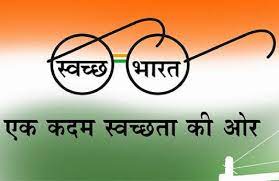The horrible ground reality of outdoor defecation that plagued India for 70 years and how Swachh Bharat Abhiyaan turned the problem on its head, bringing safety to rural women

For the first 12 years of my life, I did not have a toilet inside my house. We had a row of latrines outside that a dozen houses used. Communal toilets they are called today, I think. As a child, I thought toilets inside a home signified wealth, because most of the people in the small rural town I lived in, didn’t have toilets inside.
Worse yet, the people poorer than us didn’t use toilets. They went to defecate outside in the open.
It was quite a culture shock to many of my city-dweller friends when I described how the rural people defecated as a daily routine. The horror in their eyes betrayed the disconnect they had from the ground realities of rural India. I remember living in the hostel and hearing my friends complain about how dirty the toilets were because a whole wing of the hostel used 8-10 toilets and I remember thinking that was a good ratio of people to toilets, and frankly, I did not feel that they were dirty, but that was me because I had lived through 12 years of using public latrines and the hostel toilets seemed posh in retrospect.
I also remember the first time we built a toilet inside our house. I distinctly remember feeling that we had finally arrived in this world, that we were one of the privileged now, even rich. The round spigot instead of the square bar of metal over the tap and water, as much as I could use to flush! I remember feeling like a king. I remember cleaning my toilet to keep it spick and span,
I felt proud and very possessive.
Looking back now, I see how grave the problem was for people poorer than me. Now that I am acclimatized to toilet seats and useless first world arguments about how to leave the toilet seat open, I am still reminded about how the women in my small town went about their toilet business and the juxtaposition is jarring, to say the least.
The etiquettes of defecating in the open for women in rural India –
There was a plot of land owned by a rich urban person who spent all his time in a gulf country. The plot was surrounded by a compound wall, a tall and sturdy one. Because of no maintenance, the plot was full of bushes and a few trees. Women used to go here for their toilet business. All the surrounding land was used by men and children.
Women would usually wake up as early as 4 AM to avoid crowds. They used to carry a mug of water to wash after and the younger ones would carry a small bucket. I remember women complaining to my mother how they wished they could carry a small bucket of water and how a mug was not entirely sufficient.
In partial darkness, they would search for an unspoiled spot to squat. Stepping into faeces was routine. Chappals for this was hence kept separate outside homes.
The business was conducted in an utmost hurry. Most women carried a fistful of red chilli powder hidden in the waist of their sarees in case they were ambushed in the bushes.
Many women complained of men snooping on them by peeking above the compound wall.
Some more lecherous men went one step ahead and stole the mug full of water and left the women behind without any facility to wash after.
In the men’s section of the ground, the situation was more brutal. I had heard of buckets of water taken away by force, little boys slapped because they had somehow encroached on someone else’s territory and other horrible things.
I remember talking in disgust about these recollections to my friends in college and now I realize how naïve I was.
What was disgusting to the now “civilized” me, was a daily reality for every rural villager every day of his life.
Imagine the loss of dignity for a woman who had to walk into the open to defecate. Imagine how they would have to do it during the torrential monsoon days, or during the times when they were sick, or on a day when they “did not feel like it.”
It was a human rights travesty is what it was.
Now that we have broached the topic, I want to shift the focus somewhat a little further head to sanitation infrastructure –
A new building was being constructed down the road from my house. When it was completed, they left the outlet of their sewage on the road. This was not just their wet sewage, but also the solid waste effluent from their septic tanks.
One year after all the houses in the buildings were occupied, the septic tanks started overflowing on the road. During monsoons this would look like rainwater flowing and children would stomp on the small water puddles thinking it was rainwater. They did not know that they were playing in the solid wastewater.
In 2017, three years after 2014, we finally got gutters. And finally, all the solid waste from the building was directed into the gutters.
Mind you the gutters are still open. They are not concealed or closed. But open.
Most small houses had septic tanks that were emptied by calling a manual scavenger. You would pay them 2000 rupees and they would empty your septic tank.
Now we have a motorized tanker that sucks out the solid waste from septic tanks, effectively eliminating the use of manual scavengers.
The effects of bad sanitation and open defecation on health –
Once a month I remember a municipal worker would come to each house in my town and give us one tablet to consume. It was a broad-spectrum de-worming pill. Pet owners will relate to this because I know how dogs have a de-worming regime nowadays where they are given pills every other month to eliminate intestinal parasites.
That’s how we used to live. Like dogs of today, kids were given deworming medication every month, because we always had worms in our faeces. I distinctly remember my parents telling me to inform them if I saw worms in the toilet. I remember it being a normal routine affair until we built a toilet inside our house.
My mother told me horror stories of worm infestations in my ancestral village where there would be no toilets and kids went through agony because of worm infestations. My cousin was told to squat and my uncle pulled a foot-long tapeworm from his posterior. We laugh about it, but the problem is grave in rural India.
Parasitic infections due to inadequate sanitation progress remain one of the most ignored medical crises in the world.
There is significant Musculoskeletal underdevelopment because of it. There is also documented underdevelopment of mental abilities because of parasitic infections.
Pregnant women who defecate outdoors put their developing embryos at significant risk of being born disabled because of hookworm infections.
The problems are numerous, but the solution was and still is just one – building indoor toilets.
How Swachh Bharat Abhiyaan changed the landscape in my town –
It started in 2016, not in 2014. But when it was approved, the mission moved with quick efficiency and implementation. Every locality had a shauchalaya built. This was not some plastic temporary toilet, but pucca brick and mortar structures with clean toilets segregated for men and women.
These toilets were cleaned every day with bleach. I know this because one can smell the bleach a kilometre away from these public toilets.
In 2019, funds were finally released for the construction of toilets inside the household in our town. Back then they gave 10,000 rupees for every house to build a toilet.
Today, almost nobody uses public toilets because every house has a toilet inside.
I have already mentioned the construction of gutters.
They have also built a water purification plant at the supply station for supplying clean water to all homes.
You should see the change in the health of the townspeople. For the first time in my life, I saw them fat! Fat and soft. It was such a shocking sight because these were hardy people, and now they finally were free of diseases caused by a lack of sanitation facilities.
The empty plot erstwhile used by women is still vacant and is no longer for public defecation use.
The evidence of the benefits of Swachh Bharat Abhiyaan is easy to spot nationwide –
More than 600 million rural people have access to improved sanitation facilities in India. This makes India the leader in rural sanitation in the whole world.
More than 100 million toilets have been built in villages, giving women access to toilets and saving their dignity and maintaining their self-respect.
Rs. 50,000 crores have been spent by the government to build these toilets. The first of a kind mission by any government in the last 75 years. This is not just villages.
This means building toilets everywhere – in railway stations, public schools, petrol pumps and hospitals.
More than 300,000 deaths due to poor sanitation have been avoided because of this mission.
A whopping 58% of children have seen better nutritional absorption after building toilets in their locality. The problems of stunted growth and wasting have been eliminated in them.
Sanitation coverage has reached 100% of all districts in India, one way or another. This is just phase 1. In phase 2 expect even better returns in terms of improved health of citizens.
Now that you have a perspective of how the situation on the ground was in terms of sanitation, I ask the question – why was this basic necessity denied to us for the last 60 years?
I am reminded of this moment where Prince Pappu’s walnut-sized brain is bewildered because cleanliness and sanitation improvement is a national policy –
A link to the video is provided at the end of the article with the rest of the sources.
It was MK Gandhi who advocated for the eradication of manual scavenging, right? His clan ruled for the next 60 years after independence. How come it is only after 2014 that the govt began implementing the steps to eradicate manual scavenging?
And then they have the gumption to say that the BJP is appropriating Gandhi for themselves? Gandhi’s descendants did nothing while the rural countrymen went about their toilet business in the open, becoming an international joke for all. Nothing was done at the ground level.
The tone-deaf reaction of Prince Pappu proves how disconnected they were from reality.
They scream women empowerment today, and they left rural women to defecate outside in broad daylight? Where were the champions of feminism all those 60 years? Why did Indian women have to wait for 6 decades to reclaim their dignity and self-respect?
And they have the gumption to call Modi a fascist? For what? For empowering women by giving them toilet facilities that should have been given to them 60 years ago?
Where was the Iron Woman of India when infant mortality was at an all-time high because of lack of sanitation facilities and parasitic infections?
If you want to know the reality, go to any village and ask them how their sanitation facilities were before 2014.
Even today, many villages are getting their first water connections.
Even today, many villages are getting their first electric connections.
Even today, many villages are getting their first primary care hospitals built.
Even today, ration qualities are being improved in ration stores across the country.
It’s 2022 and while the developed countries talk about self-driving cars and going to Mars, we are talking about building toilets for the poor.
What did the governments do all these years?
Nothing. They did nothing. All this talk about Manmohan Singh being judged favourably by history and he did zero things for the needy in the country.
While the villagers carried a mug full of water to wash their behinds after defecating in the open, sacrificing their self-respect, the congress party leaders filled their coffers with public money.
Basic rights were denied and now they scream fascism. True fascism happened for 60 years.
History will judge the BJP government kindly when they finally realise that 600 million people were given toilet facilities, a pucca house under PMAY and water connections under Har Ghar Nal Jal Yojana.
Ask around the villages and you will get the answer. The privileged do not know how the country suffered under the Congress yoke.
I have said this before and I will say it again – Modi deserves the Nobel Prize for bringing accessibility to better sanitation facilities for 600 million people.
He will be known as a statesman par Sardar Vallabhai Patel in the future.
I will be sciences to him.
That’s it.
Namaste.
sources-
How outdoor defecation affected women in India-
How outdoor defecation affects dignity and safety of women in villages –
Women subjected to disease and even violence during outdoor defecation –
How Swachh Bharat Abhiyaan improved the health of women by improving sanitation –
How Swachh Bharat Abhiyaan reinstilled self-respect and dignity in rural women –
Complete list of improvements in health indicators in rural population after implementation of Swachh Bharat –
How Swachh Bharat Abhiyaan turned India into a global leader in rural sanitation –
How Swachh Bharat has spread awareness about manual scavenging –
A comprehensive data dump for the social advancements brought by Swachh Bharat Abhiyaan –
Rahul Gandhi effectively laughing at the Swachh Bharat Mission –
How parasitic infection regressed mental development in USA –
How parasitic infection is ignored and causes millions of dollars in losses even in developed countries –
Credit- u/Critavarma
r/IndiaSpeaks



